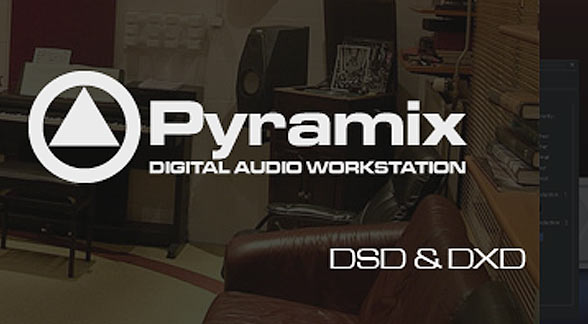What About DXD?
After a reader pointed me to the SA-CD.net site and highlighted the filtered list labeled “Original DSD/DXD Recordings”, I knew I had to come back and talk about DXD further. If you’ve been reading along, you know that only a small number of SACD releases (less than 16%) are actually untouched by PCM (if that matters). But the whole category of DXD is worthy of a closer look.
DXD stands for Digital eXtreme Definition and is one of the systems (we’ll look at another tomorrow) that have been developed to get past the lack of production tools for the DSD format.
According to the developers at Merging Technologies, their Pyramix Digital Audio Workstation is the solution. Here’s a blurb from their website.
For those who want to work in the DSD domain at 2.82MHz sampling rate for SACD production, Merging Technologies has a unique answer:
Pyramix is one of the only systems in the world to offer multi-track record/editing and mixing as well as mastering while maintaining all the real-time audio processing including of FX such as EQ, Dynamics, Reverb and Surround Sound in a DSD compatible quality level up to the final SACD master. Quite simply, to have only a mastering capability for DSD is not enough. Unless you can record, edit and process the signals in a true multi-track configuration, mastering makes little sense.
Pyramix is the first system with enough processing power and resolution to handle in real time a complete digital mixing console capable of operating in 32 bit floating point at 352.8 kHz, which is the minimum requirement to preserve all the intrinsic original quality of 1 bit 2.8MHz DSD signals.
With real-time EQ, Dynamics, Reverb etc, and with full SACD scarlet book specification for mastering, we can truly state that “Pyramix is the only commercially available system on the market that is capable of a complete multi-track source to master project for Super Audio CD production.”
I think what they’ve stated is essentially true…and is somewhat surprising for a marketing piece. Here’s the sentence that is true:
Quite simply, to have only a mastering capability for DSD is not enough. Unless you can record, edit and process the signals in a true multi-track configuration, mastering makes little sense.
The process of engineering records requires the production team to have the ability to record, edit, process (reverberation, EQ, filtering etc.) and master the audio in the multi-channel format. The Merging Technologies site makes the point where some other DSD providers do not.
So what to do? They decided to develop a digital audio workstation with a lot of tracks and the ability to process them prior to the final mastering step. And the system that they developed is all about PCM at a very high sample rate (a multiple of 44.1 kHz…or 352.8 kHz) and using 24-bit words.
Let’s be completely clear what they’ve done. Producers that want to record and release SACD or DSD downloads using the Pyramix option MUST convert the source audio to PCM, which is the format that the folks at Sony/Phillips were railing against back in 2000 when they proposed the SACD format. It’s not a coincidence that their format is called DXD instead of PCM. Calling it what it actually is might take away from the “buzz” that is currently making its way through the forums and magazines. It’s simple DXD is PCM!
Here’s the part of the quoted piece that’s open for debate:
Pyramix is the first system with enough processing power and resolution to handle in real time a complete digital mixing console capable of operating in 32 bit floating point at 352.8 kHz, which is the minimum requirement to preserve all the intrinsic original quality of 1 bit 2.8MHz DSD signals.
They’re saying that you need 352.8 kHz and 24-bit words in PCM format to “preserve all the intrinsic original quality of 1-bit 2.8Mhz DSD signals.” This gets back to the subjective side of the audio fidelity equation.
The technical/science side of the issue begs to differ. If a production team uses DSD 64 to record, the frequency response (before the noise begins to mount up) extends to perhaps 30-35 kHz. Do we really want to capture and process all of the “purple haze that exists about the “audio band”? The dynamic range might equal 20-21 bits or about 124 dB. PCM at 96 kHz/24-bits can easily encompass this level of “intrinsic original fidelity”.
So the SA-CD.net site should remove the DXD discs from the “Original DSD/DXD” category. Anything recorded using DXD belongs in the PCM column.
To be continued…

